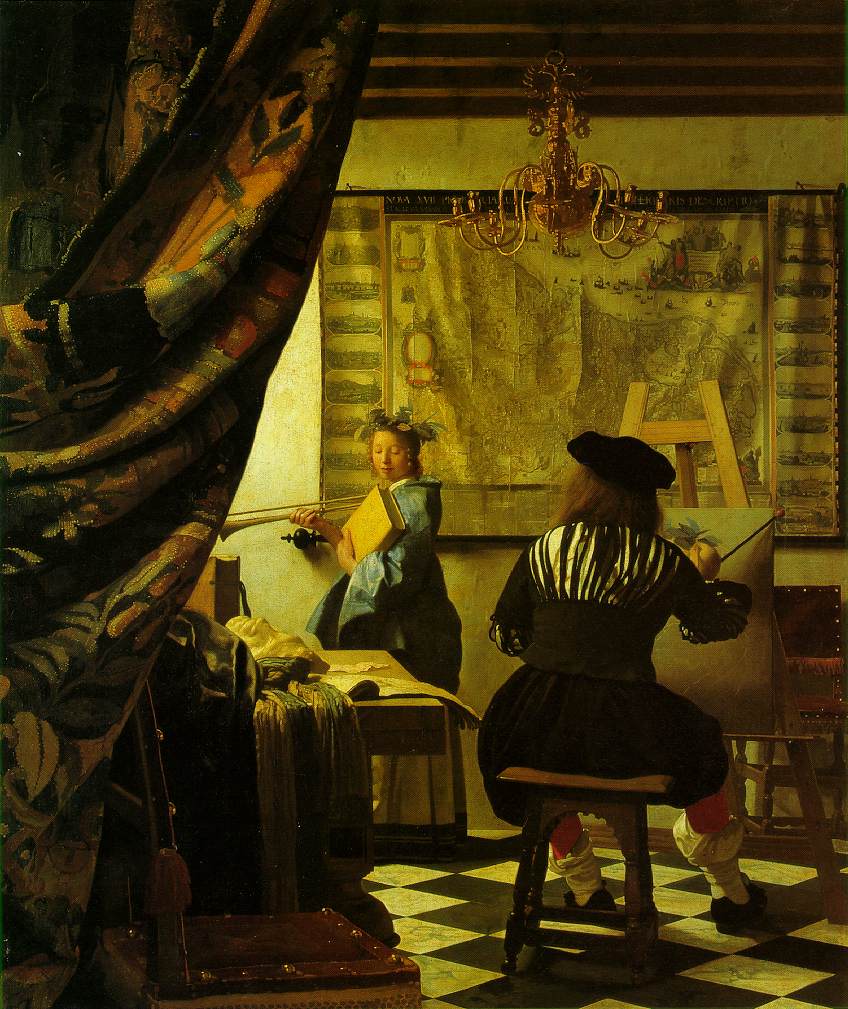 The Art of Painting - Jan Vermeer
The Art of Painting - Jan Vermeerc. 1666-73; Oil on canvas, 130 x 110 cm; Kunsthistorisches Museum, Vienna
Sylvia Shaw Judson gave us a slim volume entitled, The Quiet Eye, the philosophy of which being one of quieting one's inner life through art; using that which one looks upon to bring about a peace that is rare, given our usual states of conscious turmoil, hectic drivenness, and other conditions of unrest. This, of course, is the point of carving out time to spend on a retreat. But I find the paintings of Jan Vermeer to provide such opportunities of centering, reflection, contemplation (I believe fellow Massketeer Porthos does too, but I'll let him speak for himself.) Music by the Tallis Scholars is conducive to such contemplation as well.
Given the works of evil perpetrated upon students and faculty of Virginia Tech University, the alternatives -- a "mind enslaved" and a mind at rest in God's arms [Psalm 131] -- one would do well to heed the words shared by friend and mentor, Gil Bailie:
Given the works of evil perpetrated upon students and faculty of Virginia Tech University, the alternatives -- a "mind enslaved" and a mind at rest in God's arms [Psalm 131] -- one would do well to heed the words shared by friend and mentor, Gil Bailie:
(The polymorphously perverse mind) is a mind enslaved. It desires not only to possess the other, but to consume or destroy. It wishes not only to imitate the other, nor merely to possess itself in the other, but to destroy the other as the place where the self is alienated to itself.
All the appeals to custom, to tradition, to authority, to the positive teaching of religion, to the gestures repeated since childhood are not meant to compel reason nor to supplement it, but to protect it against the vertigo of the imagination. And the only people to be scandalized are, in the words of St Augustine, ‘Those who do not know how rare and difficult a thing it is for the fleshly imagination to be subdued by the serenity of a devout mind."
2 comments:
ALdous Huxley described Vermeer as a painter of human still lives. The Art of Painting is my personal favourite Vermeer painting.
I quite agree regarding Rembrandt's Three Crosses, Andrew.
Post a Comment